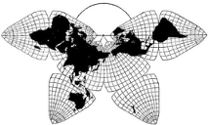
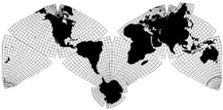
Cahill-Keyes 1975

Cahill 1909
|
Go back to
Gene Keyes
home page
Cahill-Keyes 1975 |
|
Cahill-Keyes Octant Graticule:
Principles and Specifications with Perl programs and OpenOffice.org 2.0 macros for 1/1,000,000 Megamap Gene Keyes 2011-01-12 |
|
15) Toward a Computerized World Coastline for the
Cahill-Keyes Octant Graticule Latest Programming by Mary Jo Graça, "CKOG-Plus" (Edited by Gene Keyes) 2011-01-12
|
|
|
Note by GK: Next is Mary Jo Graça's Read-Me for her third interrelated Perl program, "CKOG-Plus", describing how she converts latitude-longitude data to the Cahill-Keyes Octant Graticule (CKOG), as well as doing a test import of Nova Scotia coastline data, from NOAA's
Subs Equator() and Joints() — used by other subroutines; these calculate meridian intersection with equator (Je) and meridian joints (Jt and Jf) — refer to fig. 4. Sub Parallel 73() — used by subs Preliminary() and MPtoXY() — refer to fig. 6a. Sub MPtoXY() — the conversion from meridian - parallel to x-y within the template half-octant, taking into consideration the different zones of calculation — refer to figures 5 and 6. Subs LineIntersetion(), Length(), Interpolate(), CircleLineIntersection() — just tools used by other subroutines. Sub LLtoMP() — converts world longitude - latitude to half-octant-template meridian - parallel — refer to fig. 1. Sub MJtoG() and sub Rotate() — (the former sub uses the latter) convert from template to Cahill-Keyes coordinates — refer to figures 2 and 1. The subroutines are not given in any particular
order. To convert world data from longitude - latitude to Cahill-Keyes world
map coordinates one would, after having called sub Preliminary() only once,
call the following three subroutines once for each datum: sub LLtoMP(), sub
MPtoXY() and sub MJtoG(). These subroutines call all the others.
|
Note by GK: Here are four very
preliminary samples of coastline data absorbed into the Cahill-Keyes Octant
Graticule by Mary Jo Graça's "CKOG-Plus" program, showing Prince Edward
Island and Nova Scotia at scales of 1,1,000,000, 1/2,000,000, 1/5,000,000,
and 1/10,000,000. These are screen-shot jpegs by Gene Keyes from OpenOffice.org
Draw 2.0 on an Asus eee 701 4G netbook and a 17" monitor. The scales are only
approximate, due to monitor distortion,
as well as differing sizes of my monitors, and yours. Pdf's would give a
more accurate printout, but those will be deferred till a more advanced state
of the project. As mentioned above, the right angle dark line shows content
of the map if printed at 1/1,000,000 on 8.5 x 11" paper; and the data source
is a 1/2,000,000 segment from NOAA):
Nota bene: the point of this exercise is to imagine the entire world map at these scales! And in such a regular graticule! Then to do a complete version . . .
|
1/1,000,000 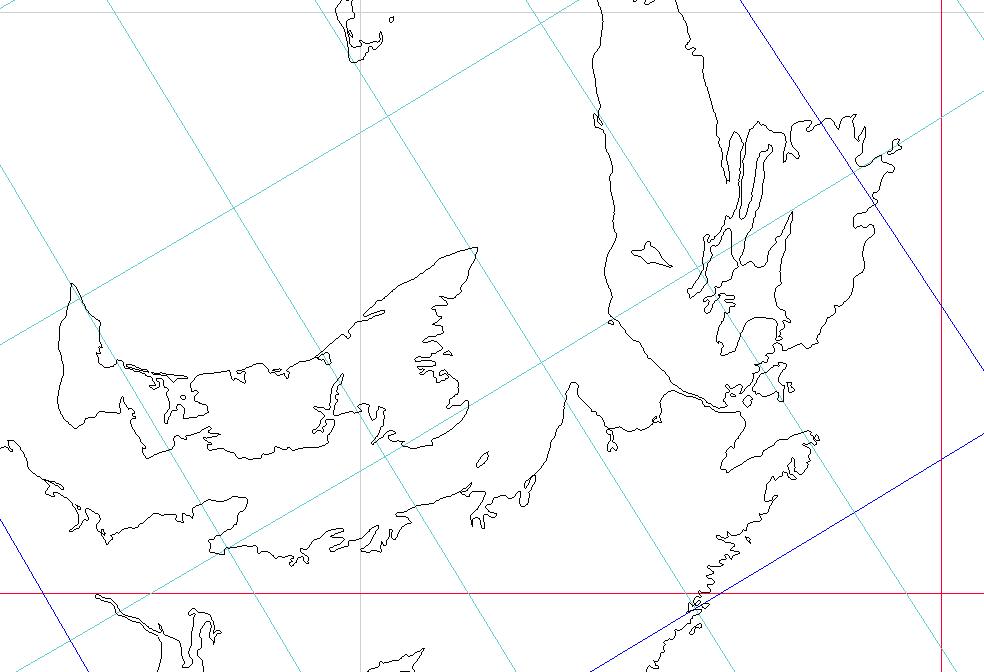
1/2,000,000 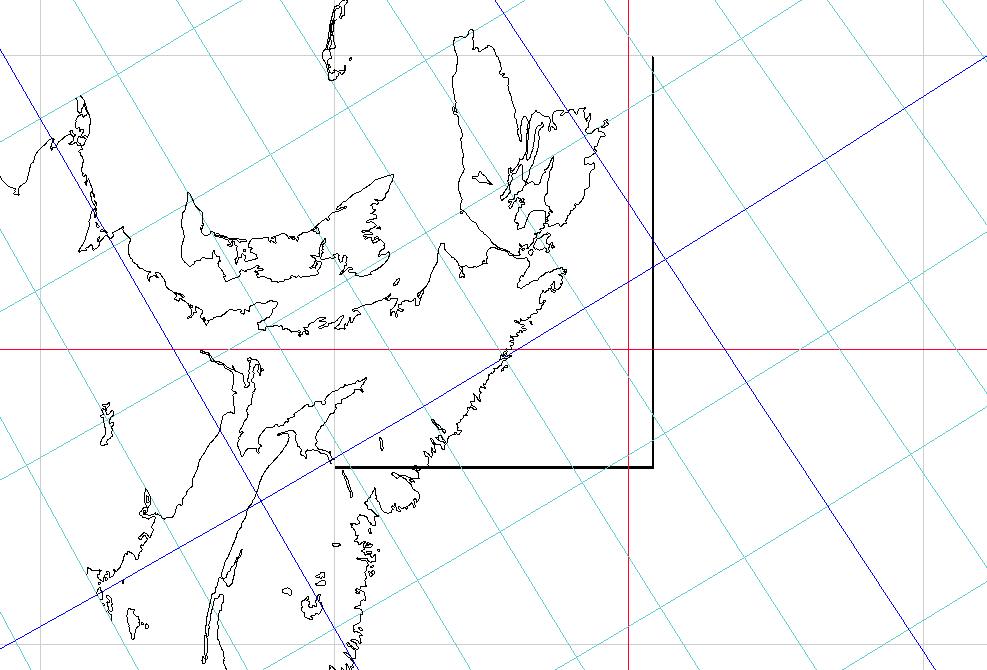
1/2,000,000 1/5,000,000 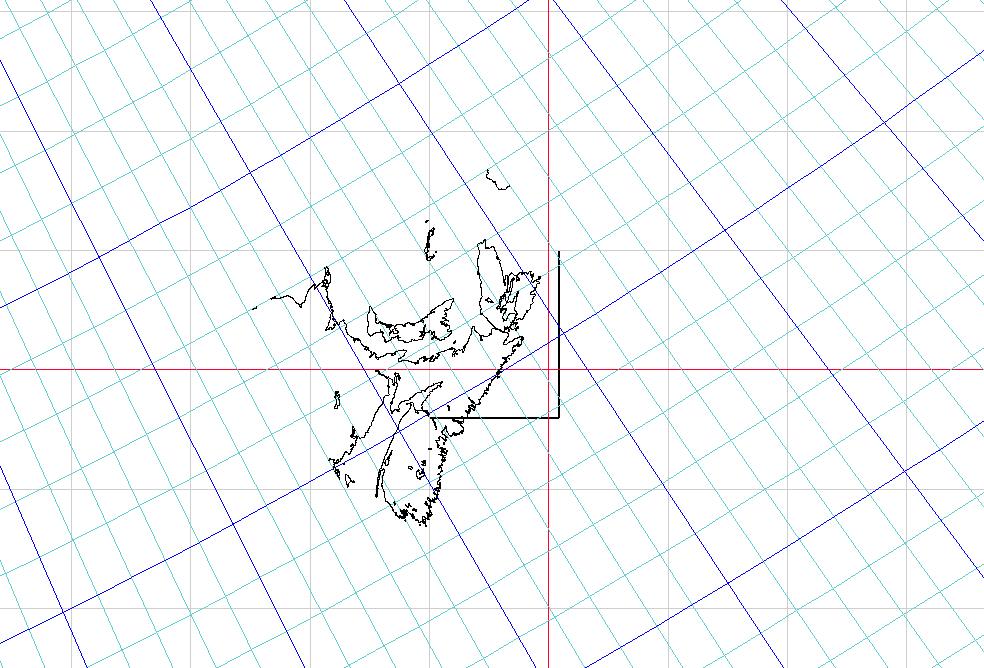
1/5,000,000 1/10,000,000 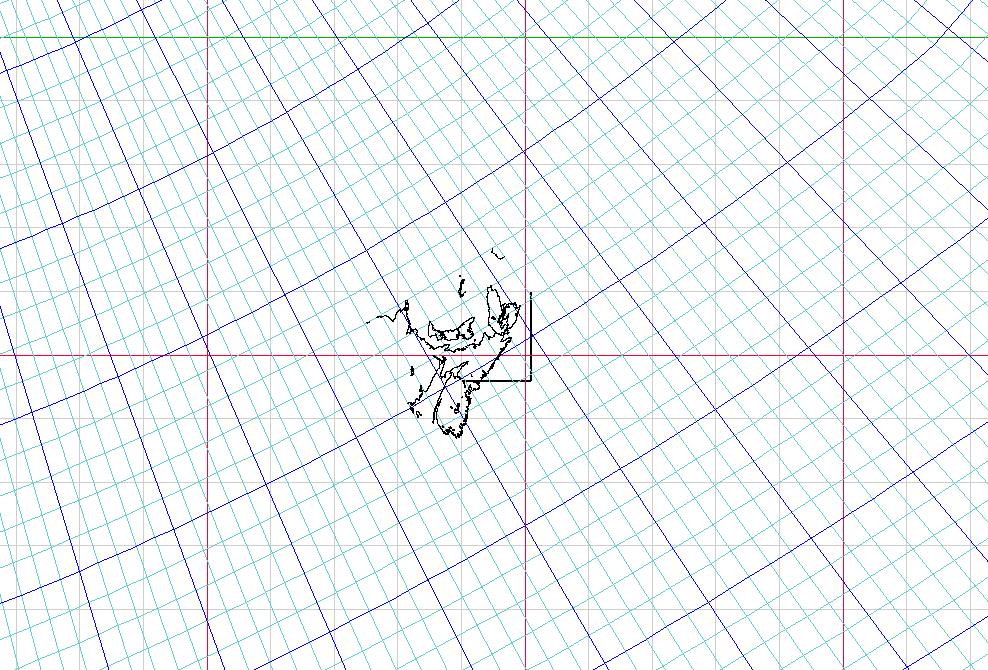
|
| Reprise of Contents
|
Comments or suggestions or streamlining or other programs or programming approaches are more than welcome: gene.keyes--at--gmail.com
|